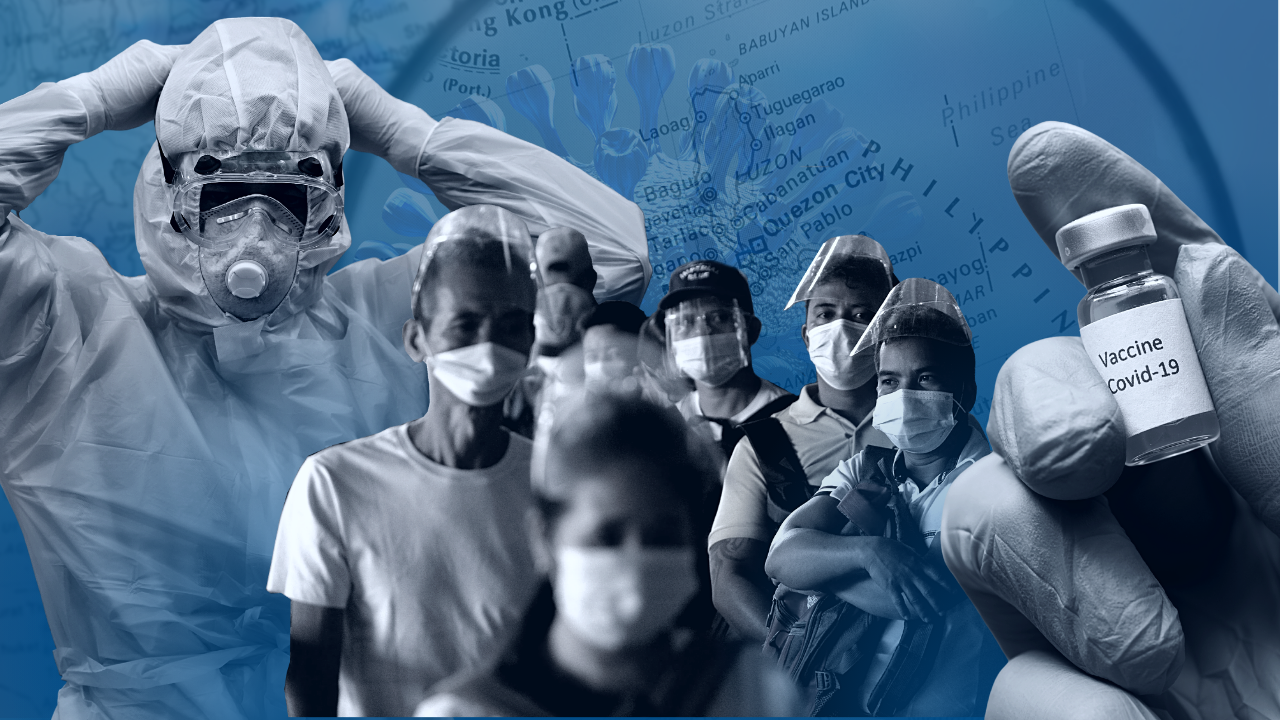DOH: Current surge still Delta-driven

Artwork by Daniella Marie Agacer
Health experts differed on how to explain the postholiday surge in COVID-19 cases, with the Department of Health (DOH) attributing it to the Delta variant of the novel coronavirus.
“While Omicron is a variant of concern, most of the circulating cases are caused by the previously identified variants. At present, the Delta variant remains to be the most transmissive variant,” the DOH said in an advisory on Friday.
But other experts were now talking about Omicron, with Catholic priest and molecular biologist Fr. Nicanor Austriaco saying that the variant was “milder” although still fatal.
“It is milder for sure,” Austriaco, a fellow of the independent OCTA Research Group, said at an online forum hosted by the Quezon City government. “From the data I showed, South Africa [where the variant was first detected] and now the United Kingdom,… even in the United States, it is definitely milder. But it can still kill.”
‘Beginning of the end’
Austriaco also said there were “fewer” fatalities and hospitalizations with the surge of Omicron cases compared with the surge of Delta cases.
Austriaco earlier said the Omicron variant could be considered a “natural vaccine” which could mark the “beginning of the end” for the pandemic.
But infectious disease expert Edsel Salvaña disagreed. “Omicron is a virus, it is not a vaccine, and unlike vaccines which are very safe and do not infect other people, Omicron could cause great harm,” he said at a briefing at Malacañang.
Salvaña shared the World Health Organization’s view that cautioned against calling Omicron a “mild” variant.
He said there may be less risk of infection and death from this variant among the fully vaccinated, but it could have a different effect either on the unvaccinated or those inoculated but belonging to vulnerable sectors.
Virus case update
“The risk is not zero, they could still be affected although it is less than [on] somebody who is unvaccinated,” Salvaña said.
The surge in cases continued on Friday as the DOH reported 21,819 new infections, bringing the total caseload since the pandemic began to 2,910,664. The positivity rate was at 40 percent based on 70,049 tested on Wednesday.
The highest positivity rate previously recorded was 28.2 percent, covering tests conducted from Sept. 2 to Sept. 8, 2021. The rate for Dec. 30 last year to Jan. 5, 2022 was 31.1 percent.
The last time the country saw more than 20,000 cases was on Sept. 26 last year, when 20,755 were reported.
The DOH said 13,634 of the new cases, or 63 percent, were in Metro Manila.
The new cases also exceeded OCTA’s projection of 17,000 to 19,000.The average daily attack rate (Adar), or the number of individuals found infected for every 100,000, increased to 34, a level that OCTA fellow Dr. Guido David described as critical.
David said the reproduction number in NCR was 5.69. It refers to the average number of persons who could potentially be infected.
Health-care utilization
A reproduction number of less than 1 indicates that transmission is slowing down.
Active cases nationwide were at 77,369, of which 70,321 were mild, 2,438 were asymptomatic, 2,837 were moderate, 1,461 were severe and 312 were critical.
National health-care utilization was at 33 percent, from only 18 percent the previous week.
Friday’s DOH bulletin also showed 32 percent of the country’s intensive care unit (ICU) beds were in use, same with 35 percent of the isolation beds and 14 percent of the mechanical ventilators.
In NCR, 48 percent of ICU beds, 47 percent of isolation beds and 20 percent of the ventilators were in use.
Admissions to hospitals nationwide jumped by 84 percent from the previous week. In Metro Manila, the increase was 150 percent.
The DOH reported 973 new recoveries, bringing the total number of survivors to 2,781,424.
An additional 129 fatalities raised the death toll to 51,871. Eight deaths occurred in January, while the rest were recorded between April and December last year but only reported on Friday due to late encoding.
Ten laboratories failed to submit results.
For more news about the novel coronavirus click here.
What you need to know about Coronavirus.
For more information on COVID-19, call the DOH Hotline: (02) 86517800 local 1149/1150.
The Inquirer Foundation supports our healthcare frontliners and is still accepting cash donations to be deposited at Banco de Oro (BDO) current account #007960018860 or donate through PayMaya using this link.